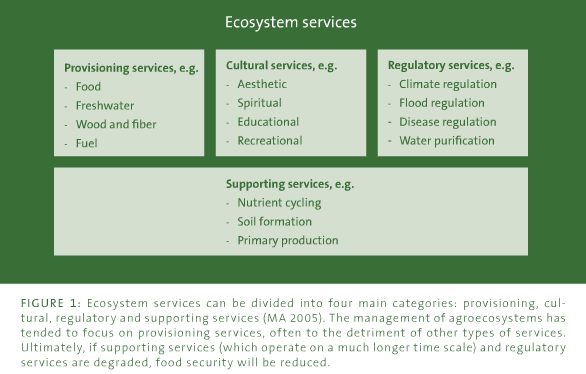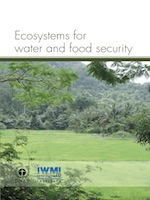

The world could function perfectly well without us, thank you, and healthy ecosystems provide a huge range of “services” that we mostly ignore. As we make more of an impact on the environment and throw delicately balanced ecosystems out of whack, we will get fewer of those free services.
As an example, well-managed agroecosystems not only provide food, fiber and animal products, they also generate services such as flood mitigation, groundwater recharge, erosion control and habitats for plants, birds, fish and other animals.
A new report by the United Nations Environment Programme, An Ecosystems Approach to Water and Food Security, advocates managing and investing in the connections between ecosystems, water and food, through diversifying crops, planting trees on farmland and improving rainwater collection and other practical steps.
As we have seen this year, climate change has produced record-breaking hot weather and drought; the 10 months from October 2010 through July 2011 have been the driest for that 10-month period in Texas since 1895, when the state began keeping rainfall records. The drought is already changing the way we look at the land, the way we do business and live our lives. All over Texas, the country’s largest beef-producing state, ranchers are selling off herds early, losing millions of dollars, or hanging on just to watch the animals die for lack of water.
At the other end of the extreme, Hurricane Irene’s winds and heavy rains damaged field crops, poultry, greenhouses, grain storage facilities and other agricultural businesses across North Carolina, causing millions of dollars of damage. The hurricane followed three years of heavy spring floods in the upper Midwest.
One of the main factors limiting future food production – perhaps the key factor – will be water. The report recommends:
- Changes in how we view our ecosystem assets. Shifting from a focus on the protection of discrete ecosystems to management of larger landscapes — addressing them in bundles of interlinked services, including those that support food production.
- Changes in how we manage water resources in river basins to ensure water for ecosystems and ecosystems for water. When allocating resources and planning land and water development, it is important to value the various ecosystems services including the provision of water and food, as well as other services, to avoid making unintended trade-offs — particularly trade-offs that are ultimately detrimental to long-term water and food security. In particular, assessing water requirements for ecosystems (environmental flows) and, when making allocation decisions, viewing ecosystems as water users are the critical first steps.
- Changes in how we approach food production, shifting the focus from “food production systems” to agroecosystems that provide a wider variety of services. This shift applies to large-scale food production, but also has benefits for small-scale subsistence production, which is often managed by women and youth. Taking an agroecosystem approach at landscape level also makes it easier to identify and act on opportunities for synergies among crops, fish, livestock, tree and forest products.
Get the full report here. (PDF, 194 pages, 7.7MB)
Read more here: Investing in ecosystem services can boost food security, raise incomes – UN
